Subscribe now to get notified about IU Jharkhand journal updates!
Applying Theory of Planned Behavior to understand entrepreneurial intentions of senior executives pursuing MBA program
Abstract :
The role of entrepreneurs in generating employment is well-known. To promote and initiate sustainable venture creation a better understanding the 'push' and 'pull' factors that affect the entrepreneurs is needed. Experienced professionals often quit their jobs to start their own ventures. However, existing research offers few theory-backed, consistent frameworks that throw light on entrepreneurial intentions of such individuals. This paper aims to test the relevance of an intentions model by applying it on a select group of. The behavior-intention link is probed using Ajzen's Theory of Planned Behavior.A questionnaire consisting of 31 items was administered online to senior executives pursuing distance learning courses in management from a private university. The questions were Likert-type questions with 7 scales. Items used in the questionnaire probed into the respondents' views on why people start their own business and the various factors that promote or deter this process. Analysis of the data obtained from the respondents was found to correspond to the three parameters of the Theory of Planned Behavior- namely attitude, subjective norms and perceived behavior control. The data was found to have high reliability.Though there was a great deal of variance in the entrepreneurial intent of the respondents, there was no difference on the impact of the three parameters on entrepreneurial intent. This finding suggests that intentions exist in all individuals which transform into desired behavior (venture creation).In future, the results of this study are proposed to be tested on a group of nascent/yet-to-start entrepreneurs to further establish the intention-behavior link.
Keywords :
Theory of applied behavior, entrepreneurial intentions, senior executives, work experience, entrepreneurship.Introduction :
An entrepreneur is 'a person who undertakes a wealthcreating
and value adding process, through incubating
ideas, assembling resources and making things happen'
(Kao, 1993). The characteristic of opportunity
identification enables the entrepreneur to start and
succeed in starting own business, notwithstanding
adverse economic conditions. Therefore, the entrepreneur
and his/her behavior become central to the process of
venture creation. As the entrepreneur is a complex
combination of interacting factors, understanding the
behavior of entrepreneurs becomes significant before
understanding the dynamics of the process of venture
creation.
There is a large amount of focused research on
entrepreneurship but most of it is focused on western
populations. Studies in this field use a number of theories
like career-choice theory, causation/effectuation theory,
etc are used to understand the process of venture creation.
Theory of Planned Behavior (TPB) is the basis of this
study. TPB has been extensively used in research to study
entrepreneurial intentions. According to this theory,
developed by Ajzen, behavior intentions are a function of
three determinants: an individual's attitude toward behavior (EA), subjective norms (SN), and perceived
behavioral control (PBC) (Ajzen, 1991) (see Fig 1). Studies
by Carr and Sequeira (2007), Kautonen et al. (2009, 2010),
Schwarz et al. (2009) (to name a few) have revealed many
more determinants of entrepreneurial intentions. The
present study aims to study the impact of 3 factors of TPB
on entrepreneurial intentions of Indian populations.
The respondents of this study are final semester students
of business administration of a private university. All of
them are pursuing Master of Business Administration
program through distance learning mode. As this is an
accelerated program for senior executives, all the
respondents have prior work experience of not less than 4
years.

Literature Review
Review of research reveals that entrepreneurship is
viewed as a type of planned behavior and use of intention
models is appropriate for investigating entrepreneurial
intentions (Autio et al, 2001). The results have been found
to vary depending on geographical regions and
population characteristics. Studies by Tkachev &
Kolvereid (1999) on University students in Russia, Linan &
Chen (2009) on University students of Taiwan and Spain,
Peng et al (2012) on University students of China, Shaik
Karim, Lokanadha Reddy (2014) on Students of Chittoor
District, Andhra Pradesh reveal that all the three
constructs of TPB, EI-EA, EI-SN and EI-PBC are found to
be significant. However, some studies have indicated nonsignificance
of EI-SN construct (Kreuger et al, 2000;
Moriano et al, 2014).
For the present study, work done by Linan & Chen (2009)
is used as basis to understand the models on intentions.
Based on the findings of the literature review, the
following important factors are proposed to be studied.
Attitude (EA)
Attitude refers to the degree to which a person has a
favorable appraisal of the behavior. It refers to the degree
to which the individual holds a positive or negative
valuation about being an entrepreneur (Bagozzi, 1978 and
Baron, 2008). The construct will be studied using the three
components of attitude-Innovative behavior (IB),
Innovative Orientation (IO) and Innovation-focused
Cognition (IFC) (Robinson et al, 1991),
Subjective norms (SN)
This refers to the perceived social pressure to perform the
behavior. Approval of family members, friends and other
social groups has been shown to have a significant impact
on entrepreneurial intentions and also intention-based
behavior in general (Cotte & Wood, 2004, Ham et al, 2005,
Kolvereid & Isaksen, 2006). While some studies have
indicated a positive significance, some have reported
no/insignificant influence on EI. In this study, the
reference people who would approve of the respondents'
decision to become entrepreneurs would be parents (P),
close friends (CF) and other important people (IP) like
teachers, relatives, etc
Perceived Behavior Control (PBC)
The third antecedent of intention is the degree of perceived
behavioral control. This refers to the perceived ease of
performing the behavior and to the perceived control over
the outcome of it.
Some studies have given precedence to
PBC and shown that EA and SN play a supporting role to
PBC in forming intentions (Autio et al, 2001). This
construct will be analyzed using the three components of
personal control (PC), fear of failure (FOF) and confidence
of one's skills (CON) regarding setting up own business.
It is linked to control beliefs, which refers
to beliefs about the presence of factors that may facilitate
or impede performance of the behavior (Rhodes et al, 2006,
Sparks et al, 1997).
The model proposed in this study gives equal importance
to all the three aspects EA, SN and PBC. A conceptual
model which reflects the influence of the three factors on
entrepreneurial intentions is shown in fig 2.
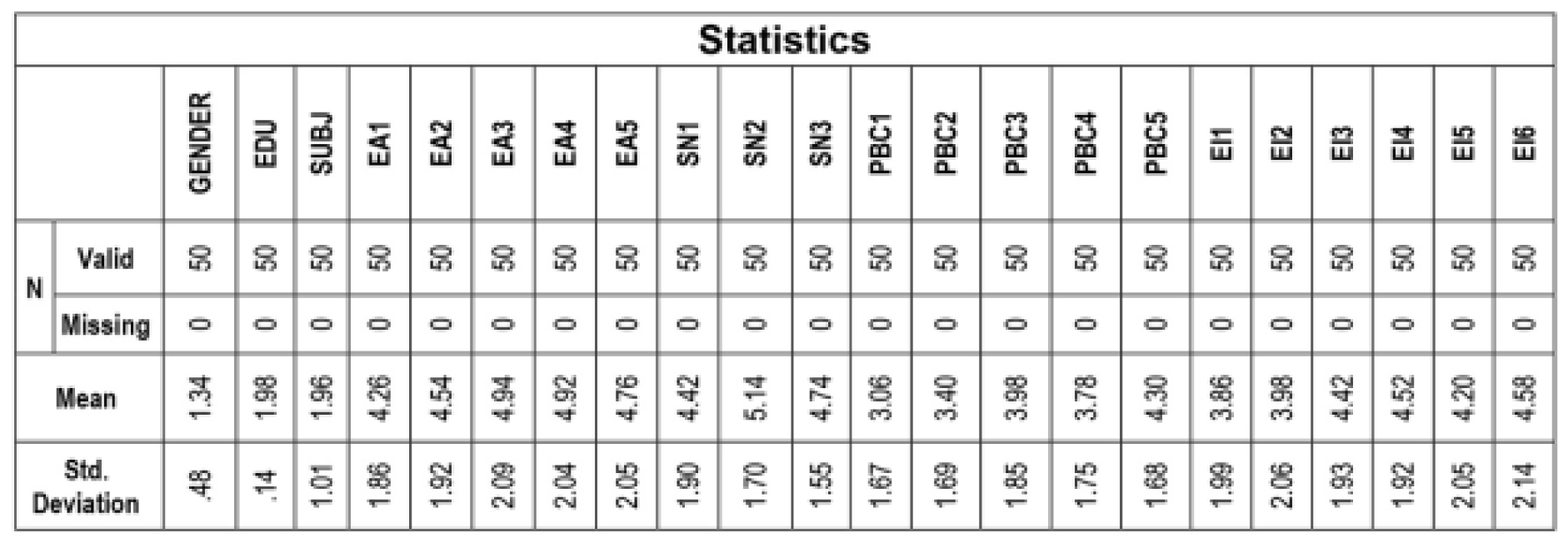 Fig. 2 : Analytical model of impact of EA, SN and PBC on
entrepreneurial intentions
Fig. 2 : Analytical model of impact of EA, SN and PBC on
entrepreneurial intentions
The research model has 3 constructs with 19 independent
variables. Bivariate correlation carried out on the data
revealed linear relationship between variables that falls
into a pattern as indicated in the research design. However,
some variables also showed significant relationship with
few other variables.
As the number of variables is large, Exploratory Factor
Analysis (EFA) is conducted. The correlated, observed
variables are found to associate with 4 latent variables or
factors. This largely confirms the association as indicated
by the bivariate correlation. 4 factors with Eigen value
more than 1 are considered. This is supported by results of
Scree plot. In the sample, the Kaiser–Meyer–Olkin test for
sample adequacy (KMO) was notably high (.820) and
Bartlett's sphericity test was highly significant (p < .001).
Both statistics suggest that data is suitable for factor
analysis.
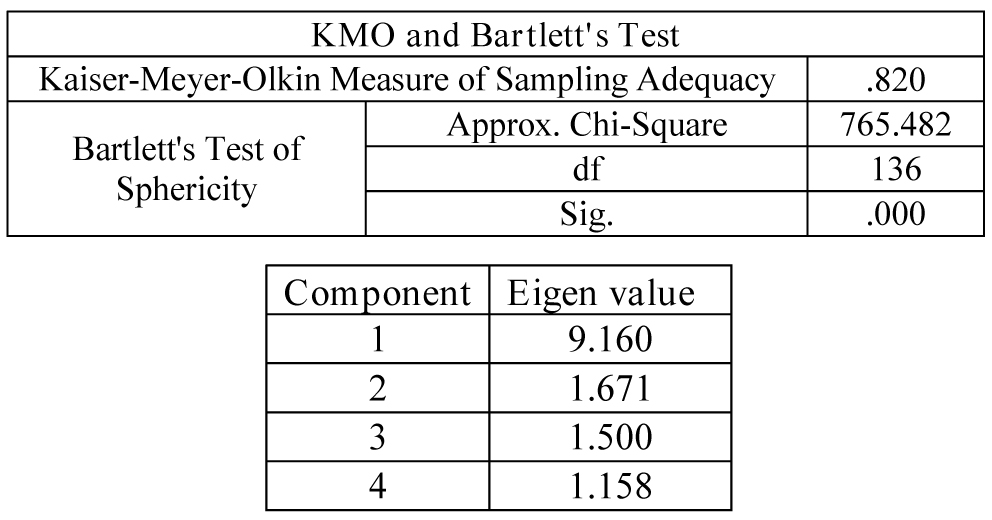
EFA results are submitted in Table-2. All the items loaded
highly on their respective factors/constructs and
variances were above 70 percent indicating high
convergent validity.
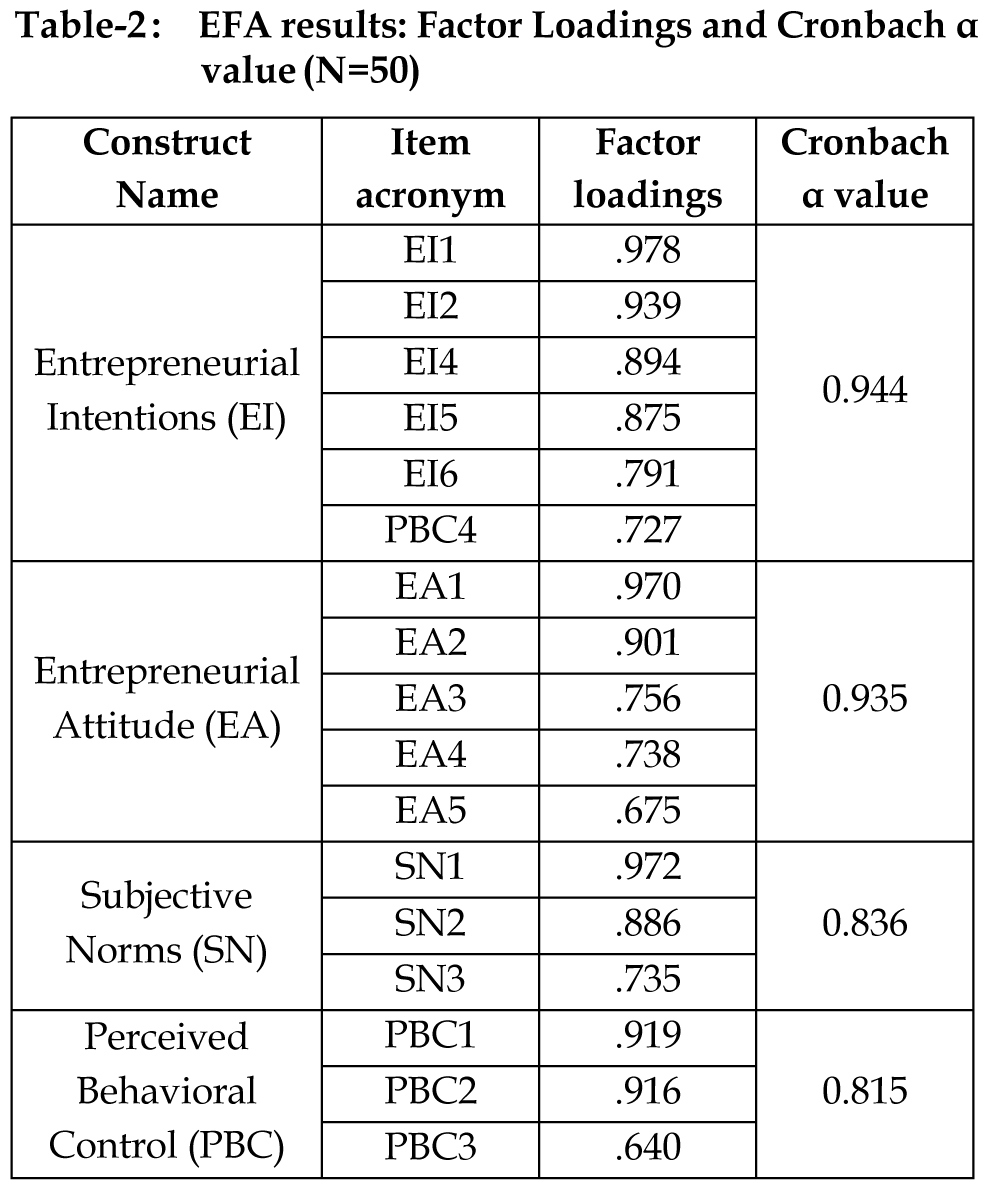
From the EFA results shown in Table 2 it is evident that the
constructs have high reliability. All the constructs display
Cronbach á values that are >0.7. So it can be inferred that
the constructs have good reliability. 5 items pertaining to
attitude (EA), 3 related to subjective norms (SN), 3 items of
perceived behavior control (PBC) are identified after
performing EFA. 6 items pertaining to intentions (EI) are
also identified, taking the total number of items to 17. One
item from PBC construct was found to cross-load into EI.
This is in line with the view that perceived behavioral
control items are strong predictors of intentions (Kraft et al,
2005). Two items of PBC did not load cleanly and were
rejected.
While EFA revealed the number of constructs involved in
the study, the relationship between latent constructs and
overall model fit is determined by confirmatory factory
analysis (CFA). This is used to verify factor structure of a
set of observed variables and their underlying latent
contructs. The present study applied Structural Equation
Modeling (SEM) using AMOS 21.0 software. Fit for all
models was evaluated using the following fit indexes Root
mean square error of approximation (RMSEA) with a value
0.06 indicates a good model fit, and 0.08 indicates an
acceptable model fit. The Tucker-Lewis index (TLI) and the
comparative fit index (CFI) is also reported : for both
values, .0.90 indicates sufficient model fit (Vandenberg and
Lance, 2000; Kline, 2011).
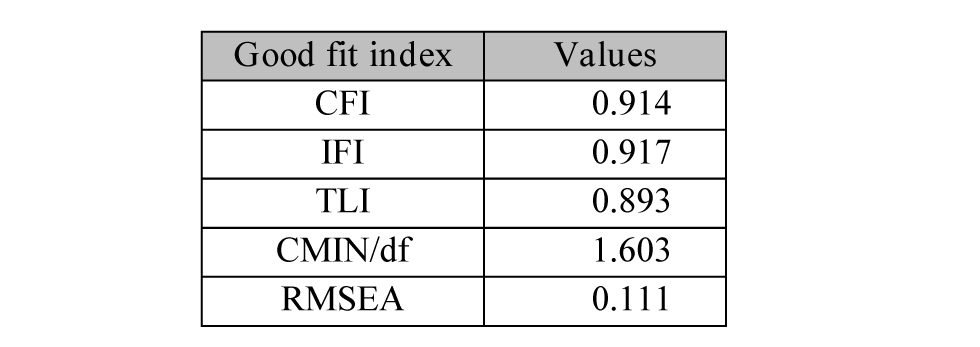
CFI=0.914 and IFI=0.917 are values >0.9 indicating a
moderate fit of the model. TLI (also called NNFI) =0.893. As
it is customary to report only CFI or TLI, CFI values are
reported for this study as the values are >0.9. RMSEA
values depend on sample size and degrees of freedom (df).
If RMSEA values are between 0 and 0.8, it indicates an
excellent fit of the model (see Fig 3). The obtained value of
0.111 indicates a mediocre or moderate fit of the model
with the data. Overall, the model can be considered to be a
moderate fit.
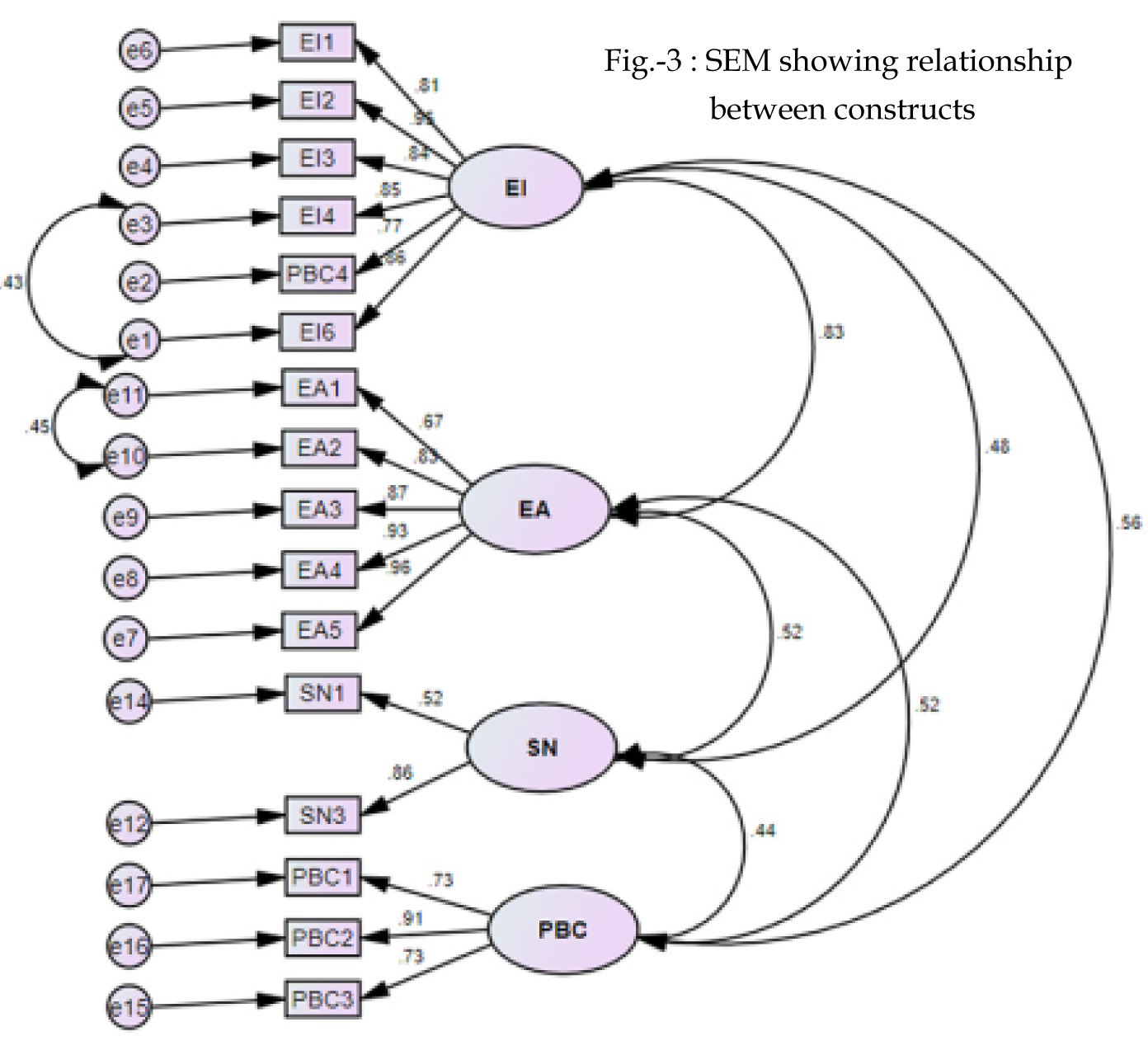
Results
It is evident from the structural model that of the three parameters, EA, SN and PBC, exert a positive impac t on ent r epr eneur ial intentions moderate as evident from the figure. EI ? EA is found to be of highest valued followed by EI ? PBC. The relationship between EI and SN was found to be least. Also, covariance was found between some items of all the three constructs. The attitude item 'To me, being an entrepreneur means more advantages than disadvantages' Is linked to the attitude item ' Beingan entrepreneur would give me great satisfaction' The entrepreneurial intention item 'I am ready to do anything to be an entrepreneur' is linked to the intention item 'I am determined to start a firm in future'.
CONCLUSION
This paper systematically explores the influence of three psychological/internal aspects of individuals on their entrepreneurial intentions. The results show that all the three factors exert significant influence on intentions thus play a major role in shaping the entrepreneurial intentions of individuals. The significance of subjective norms having the weakest impact on intentions needs to be examined in the context of the age and experience of the respondents. The strong impact of attitude on intentions places the individual at the centre of the entrepreneurial ecosystem. Various programs/schemes designed to promote small and medium-scale businesses have to suit the individual needs.
REFERENCES :
- Kao R W (1993) Defining entrepreneurship: Past, present and ?, Creativity and Innovation Management, 2(1), 69-70. Butler, D. (2006). Enterprise Planning and Development. Routledge.
- Boulton, C. and Turner, P. (2005), Mastering Business in Asia: Entrepreneurship, Singapore: John Wiley and Sons. Carr, J. C., & Sequeira, J. M. (2007). Prior family business exposure as intergenerational influence and entrepreneurial intent: A theory of planned behavior approach. Journal of Business Research, 60(10), 1090-1098.
- Kautonen, T., Van Gelderen, M., & Tornikoski, E. T. (2013). Predicting entrepreneurial behaviour: a test of the theory of planned behaviour. Applied Economics, 45(6), 697-707.
- Schwarz, E. J., Wdowiak, M. A., Almer-Jarz, D. A., & Breitenecker, R. J. (2009). The effects of attitudes and perceived environment conditions on students' entrepreneurial intent: An Austrian perspective. Education+ Training, 51(4), 272-291.
- Ajzen, I. (1991). The Theory of Planned Behavior. ORGANIZATIONAL BEHAVIOR AND HUMAN DECISION PROCESSES 50, (1991), 179-211.
- E Autio, R H. Keeley, M Klofsten,George G. C. Parker & Michael Hay,2001, Entrepreneurial Intent among Students in Scandinavia and in the USA; Enterprise and Innovation management studies; volume 2, 2001 - Issue 2;Pages 145- 160.
- Alexei tkachev and lars kolvereid, Self-employment intentions among Russian students, entrepreneurship & Regional Development vol. 11 , iss. 3,199. Krueger, Reilly & Carsrud, 2000, Competing models of entrepreneurial intentions, Journal of business venturing, Volume 15, Issues 5–6, September–November 2000, Pages 411–432.
- Liñán, F. (2004). Intention-based models of entrepreneurship education. Piccolla Impresa/Small Business, 3(1), 11-35. Virick, A. B. (2008). Assessing Entrepreneurial Intentions Amongst Students:A Comparative Study. National Collegiate Inventors and Innovators Alliance. Proceedings of the ... Annual Conference. (2008).
- Van Gelderen, M., Brand, M., van Praag, M., Bodewes, W., Poutsma, E., & Van Gils, A. (2008). Explaining entrepreneurial intentions by means of the theory of planned behaviour. Career Development International, 13(6), 538-559. Linen, Chen; 2009;Development and Cross-Cultural application of a specific instrument to measure EIs; Baylor University.
- E Autio, R H. Keeley, M Klofsten,George G. C. Parker & Michael Hay,2001, Entrepreneurial Intent among Students in Scandinavia and in the USA; Enterprise and Innovation management studies; volume 2, 2001 - Issue 2;Pages 145-160. Moriano, J. A., Gorgievski, M., Laguna, M., Stephan, U., & Zarafshani, K. (2012). A cross-cultural approach to understanding entrepreneurial intention. Journal of career development, 39(2),….162-185.
- Zhengxia Peng, Genshu Lu, Hui Kang, Entrepreneurial Intentions and Its Influencing Factors: A Survey of the University Students in Xi'an China, Creative Education, 2012. Vol.3, Supplement, 95-100.
- Saini, P. K., & Gure, G. S. AN EMPIRICAL STUDY ON THE INFLUENCES OF GENDER, ACADEMIC STREAMS AND FAMILY OCCUPATIONAL BACKGROUND ON THE ENTREPRENEURIAL ATTITUDE OF UNIVERSITY STUDENTS, International Journal of Multidisciplinary Thought, CD-ROM. ISSN: 2156-6992 :: 05(04):291–305 (2015).
- Kolvereid, Lars. "Prediction of employment status choice intentions." Entrepreneurship: Theory and Practice, Fall 1996, p. 47+.
- Kraft, P., Rise, J., Sutton, S., & Røysamb, E. (2005). Perceived difficulty in the theory of planned behaviour: Perceived behavioural control or affective attitude? The British Journal of Social Psychology, 44, 479-96.
- Hair, J., Black, W., Babin, B., Anderson, R. and Tatham, R. (2006) Multivariate Data Analysis, 6th ed., Pearson Prentice Hall, Upper Saddle River, NJ.
- Davidsson, Per (1995) Determinants of Entrepreneurial Intentions. In RENT XI Workshop, Nov 23 to 24 1995, Piacenza, Italy.
- Jennie Elfving, Malin Brännback, and Alan Carsrud, 2009, Toward A Contextual Model of Entrepreneurial Intentions ch 2 Understanding the Entrepreneurial Mind, International Studies in Entrepreneurship.
- Krueger Jr NF & Brazeal D V (1994), Entrepreneurial potential and potential entrepreneurs, Entreprenship theory and practice, 18(3), 91-104.
- Trafimow, D., Sheeran, P., Conner, M., & Finlay, K. A. (2002). Evidence that perceived behavioural control is a multidimensional construct: Perceived control and perceived difficulty. The British Journal of Social Psychology, 41, 101- 21.
- Bagozzi, R. P. (1978). The construct validity of the affective, behavioral, and cognitive components of attitude by analysis of covariance structures. Multivariate Behavioral Research, 13(1), 9-31.
- Robert A. Baron, 2008, The Role of Affect in the Entrepreneurial Process, The Academy of Management. Cotte, J., & Wood, S. L. (2004). Families and innovative consumer behavior: A triadic analysis of sibling and parental influence. Journal of consumer research, 31(1), 78-86. Marija Ham, Marina Jeger & Anita Frajman Ivkovic, 2015, The role of subjective norms in forming the intention to purchase green food; Economic Research-Ekonomska Istraživanja Vol. 28 , Iss. 1, 2015.
- Kolvereid, L., & Isaksen, E. (2006). New business start-up and subsequent entry into self-employment. Journal of Business Venturing, 21(6), 866-885.
- Rhodes, R. E., Blanchard, C. M., & Deborah, H. M. (2006). A multicomponent model of the theory of planned behaviour. British Journal of Health Psychology, 11, 119-37. Sparks, P., Guthrie, C.A., & Shepherd, R. (1997). The dimensional structure of the perceived behavioral control construct. Journal of applied social psychology, 27(5), 418- 438.
- Kline. R.B, 2011, Convergence of structural equation modelling and multilevel modeling.na.
